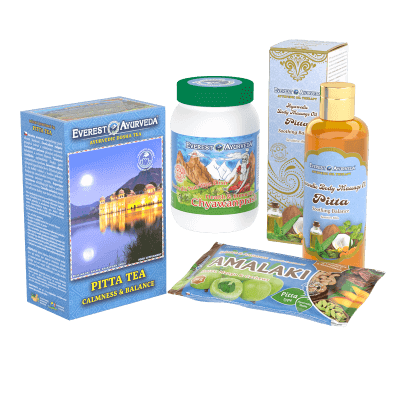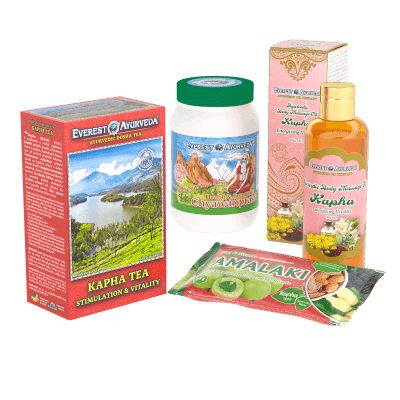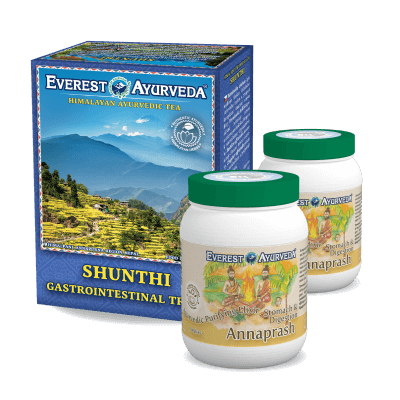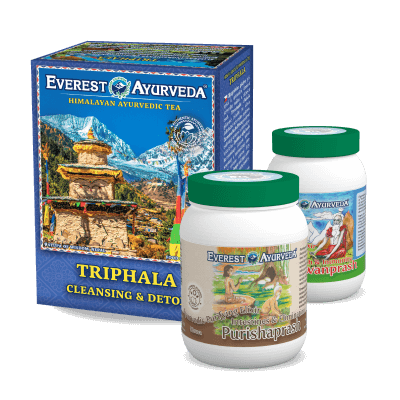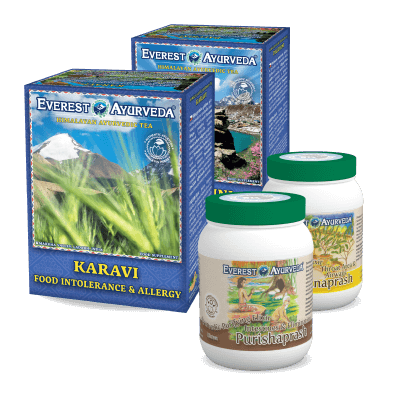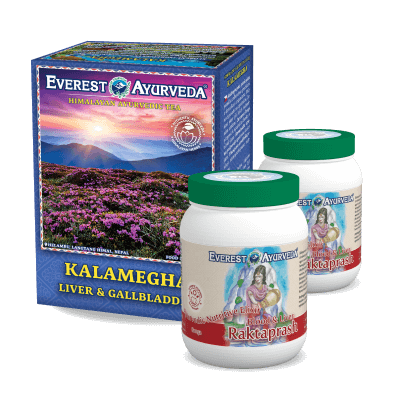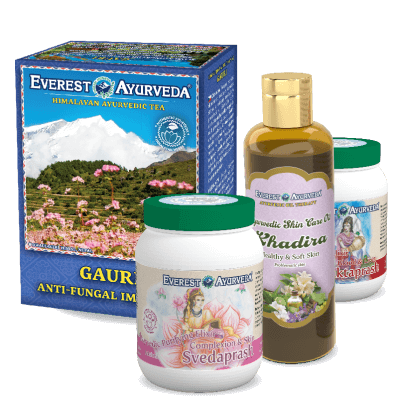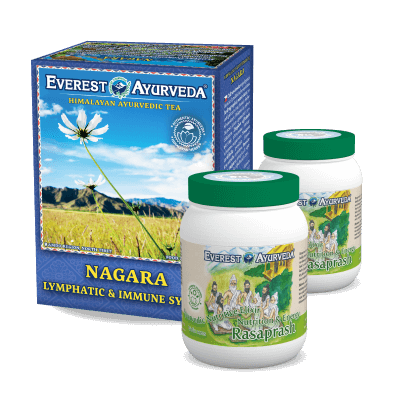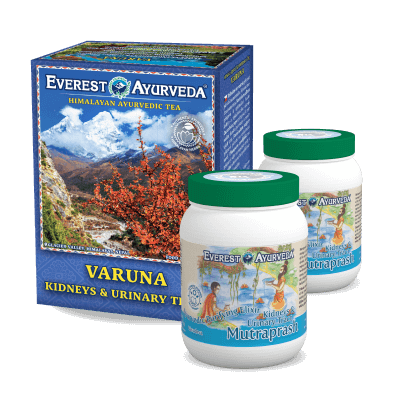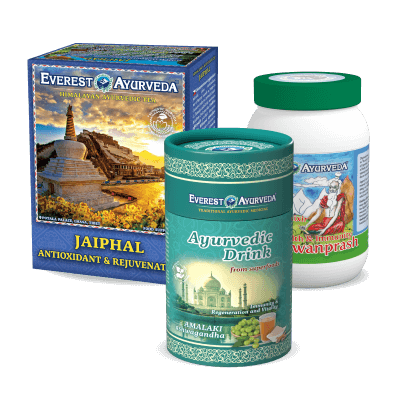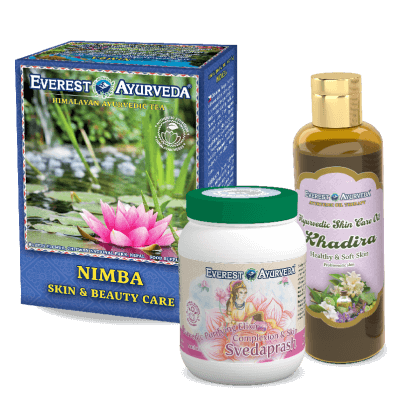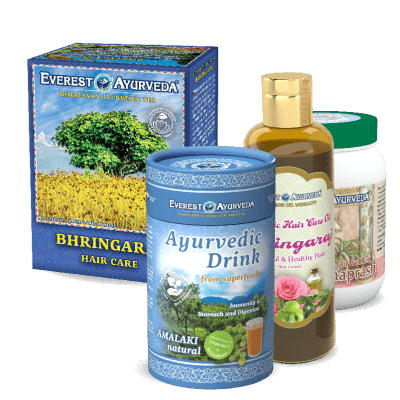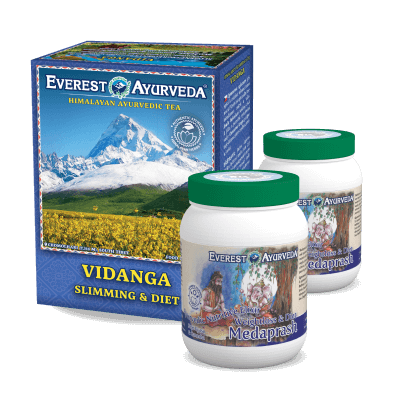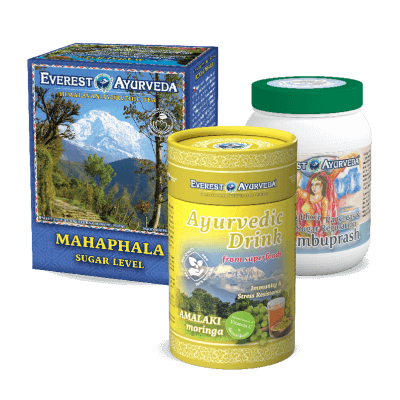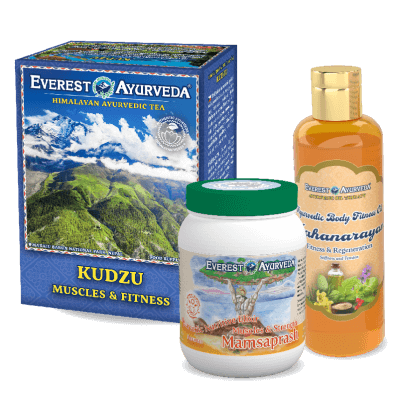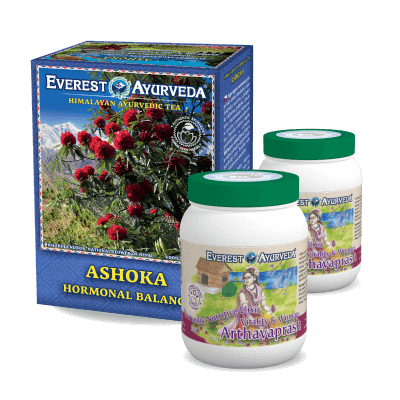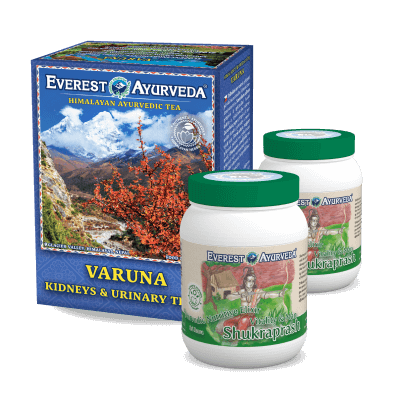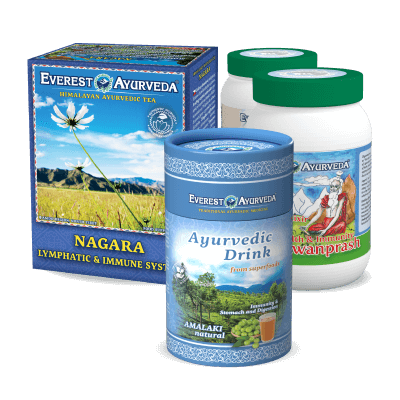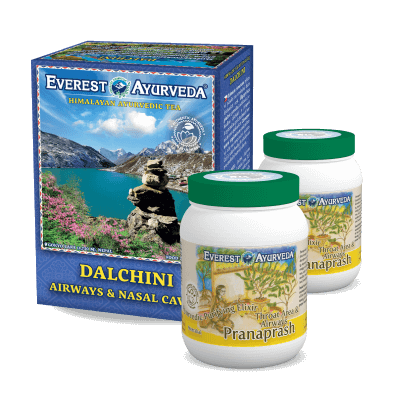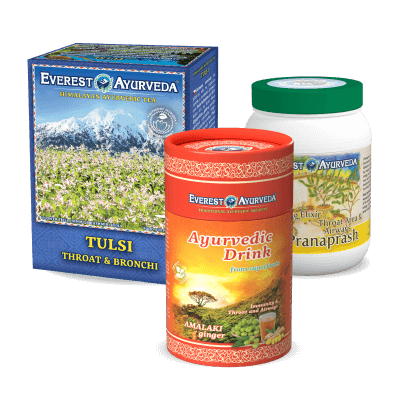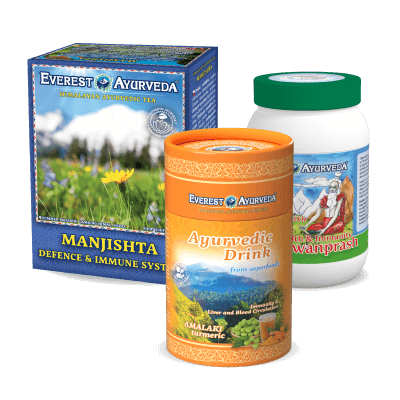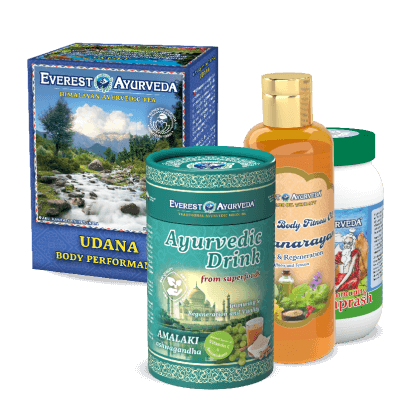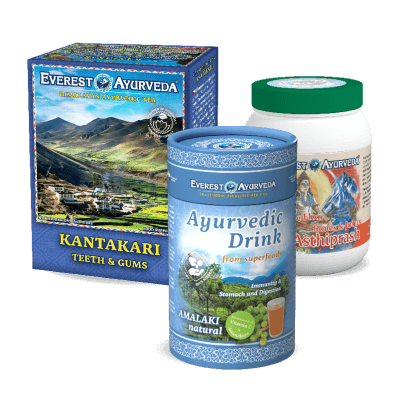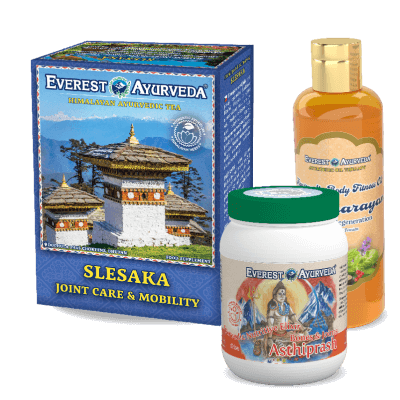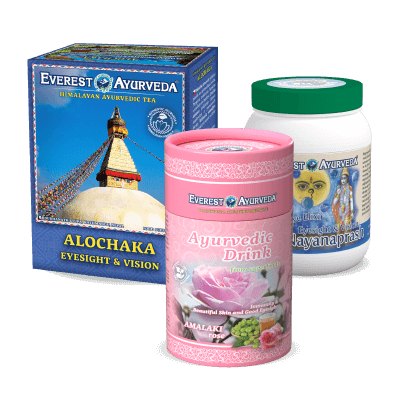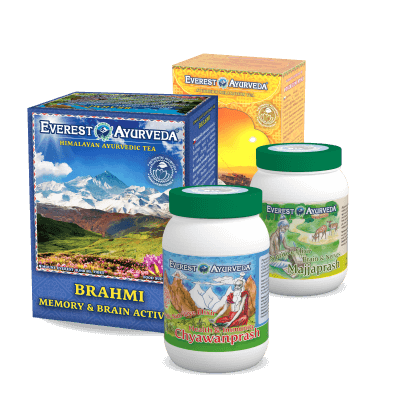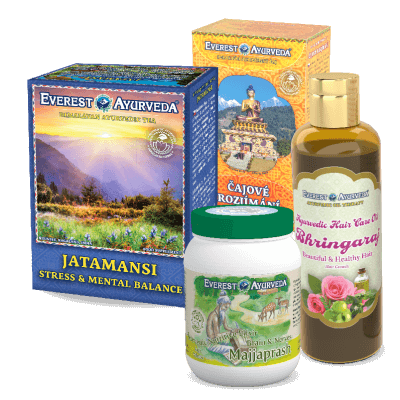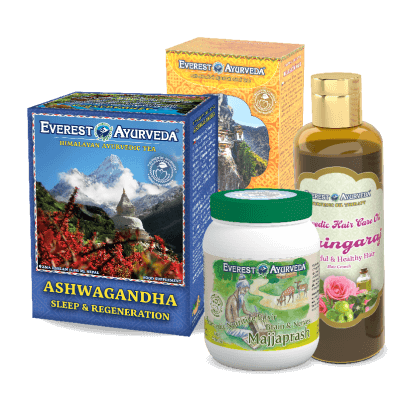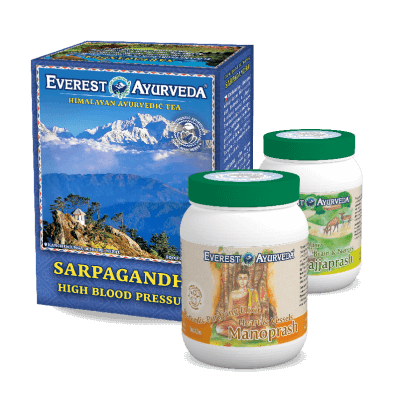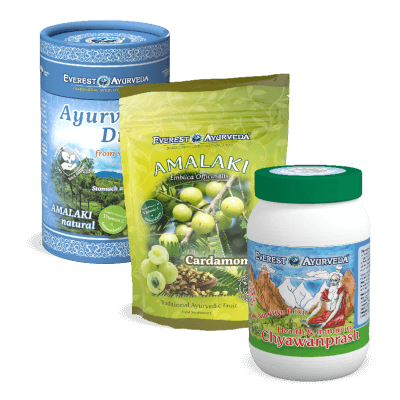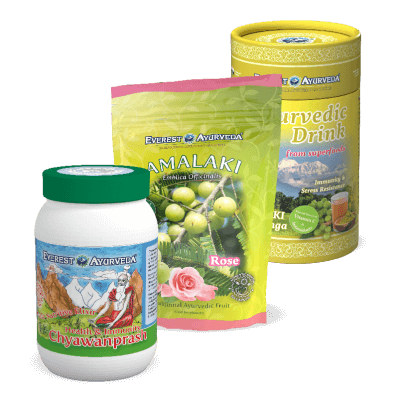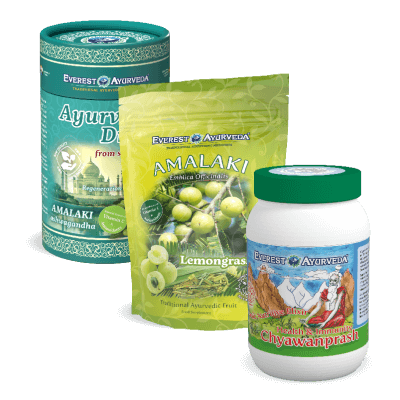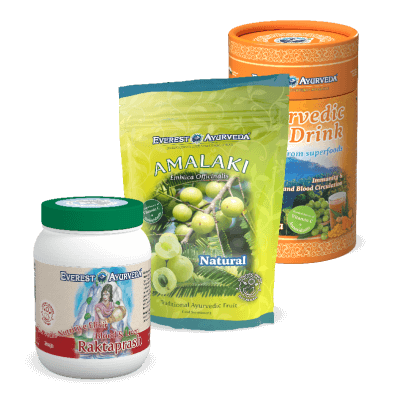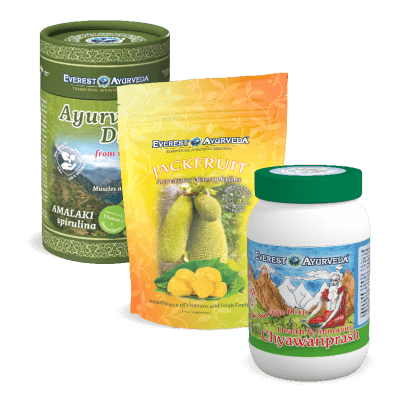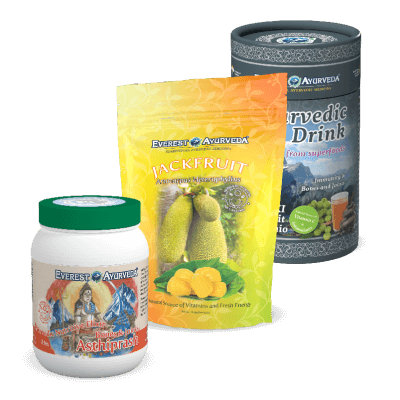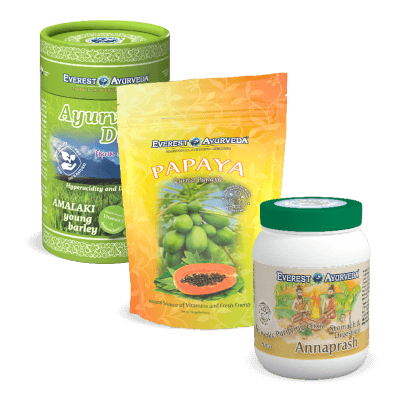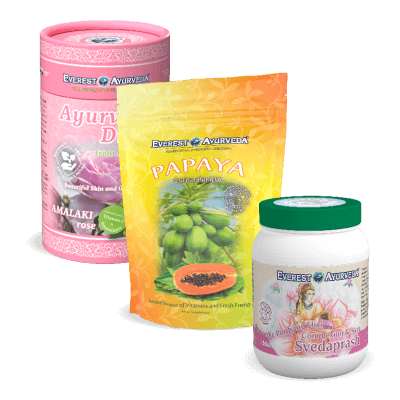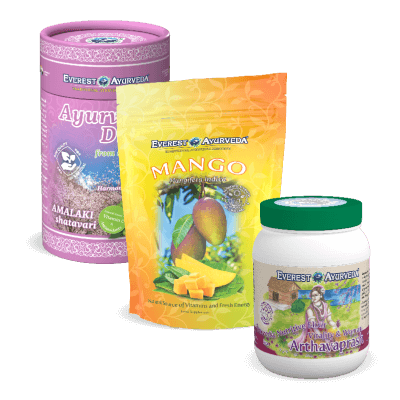In practice, Ayurvedic medicine includes two different concepts of health care. The first one represents the active home care Shamana, which focuses on the harmonization of psychosomatic functions, purification of the body and strengthening the immune system. This particular therapy relieves the symptoms and removes the causes of diseases in their initial phase, by establishing balance of the three biologicallife forces (doshas), healthy functioning of the seven bodily tissues (dhatus), regular elimination of toxic waste (ama) and harmonic metabolism or digestive fire (agni). The second type of Ayurvedic treatment is the clinical care Shodhana, which takes place under the supervision of an experienced Ayurvedic doctor. Read more about Therapeutic Methods of Ayurvedic Medicine.
For whom is the Shamana home therapy suitable?
Ayurvedic Shamana is the ideal home therapy for most regular working and employed people who are daily exposed to proportional strain and stress. It consists of seven purification methods which are applied according to the individual needs with help of herbal decoctions (kvatha) and elixirs (avaleha), grounded herbs (churna), tinctures and syrups (asava & aristha), tablets (guti-vati), oils (taila), balms (guggul) and ointments (lepa).
7 purification methods of Shamana:
- Stimulation of digestive fire (deepana)
- Purification and detoxification (pachana)
- Fasting (kshud-nigraha)
- Regulation of fluids (trut-nigraha)
- Physical activity, exercise, yoga and meditation (vyayama)
- Heat and sunbath therapy (atapa-seva) or exposure to moonlight during the waxing or full moon phase (chandra-seva)
- Fresh air therapy and breathing exercises (maruta-seva)
Read more in the article 7 Detoxification Steps according to Shamana Ayurvedic Home Therapy.


